I got to test the original Electron Wheel in 2013 and was intrigued by the idea of an all in one electric bike solution. Imagine an electric assist wheel+motor kit that could easily be installed on a wide range of bikes without the use of tools… there would be no wires to mess around with and the bike could be converted back to normal at any time. One company that has been chasing this vision is Belon Engineering, they launched the Electron Wheel through Currie Technologies in 2013 and are now re-launching the V2 Electron Wheel on their own. The box for this new version looks the same and at first glance so does the wheel… however, there are now three sizes to choose from (24″, 26″ and 700c) to fit a wider range of bicycles along with an improved pedal sensor and a wireless smartphone app. I love that the wheel mounting interface has been streamlined (that was one of my major hangups), the warranty has been doubled on the battery and a smartphone app provides more control over power use. This isn’t the perfect ebike conversion kit for everyone but the price is right at ~$800 and it could work very well for cruising around the neighborhood. The Electron Wheel definitely isn’t made for off-road use or scaling steep hills but it does include an incline sensor to make climbing more seamless. I see the product as a way to dip your toe into the world of ebikes and convert a bike you already own and love into something that can go a bit further, perhaps a bit faster and climb a bit easier.
At the heart of the 2016 Electron Wheel is a brushed, geared, 250 watt hub motor. It’s smaller and weaker than what I’d consider “average” in the US but in Europe this is as big as you can get for a low speed electric bike. I think of it as doubling my own pedaling power… It’s efficient and relatively light weight. Compared with the V1 Electron Wheel I feel like it might also be quieter. In the lowest level of assist I only barely felt it kick in but medium and high were quiet helpful. The built-in incline sensor will be active in power level modes “low” and “medium” but if you’re cruising around in in “high” mode, you receive maximum power throughout, regardless of incline. In all modes there was definitely a delay from when I started pedaling and when I stopped for the motor to activate and de-activate, shorter when stopping. Most cadence sensing ebikes offer a six or 12 magnet ring that detects pedaling motion and they tend to respond more quickly, this one uses a sensor built into the little box that connects to your left crank arm with Velcro. Given the smaller motor size, this delay isn’t as big a deal as if the motor was 500+ watts and potentially overpowering your braking needs. That’s the interesting thing about this kit, there are no brake inhibitors so it doesn’t know that you want to stop and there may be a few seconds of brakes vs. motor even once you’ve stopped pedaling. One final question mark for me is the drag that the wheel produces, the motor is brushed and I couldn’t tell if it had a freewheel, I think it did not. Basically, I could hear the gears turning inside even when coasting and this could slow you down a bit if the battery was spent and you were trying to ride home under pedal power only.
Powering the wheel is a 24 volt 10.7 amp hour battery pack which again, is on the smaller side but not necessarily a bad thing. The cells inside are Lithium-ion but I’m not sure which brand they are… the two year warranty brings some peace of mind. I don’t think it’s especially good to shake and bang batteries around and this sort of trauma may be increased in an all-in-one wheel application where the batteries are being spun in all directions but the tires are there to absorb some shock just like with a frame mounted battery. The plastic sidewalls of the wheel also protect the battery and being black, they might cause it to heat up a bit more than white or aluminum but so many other ebikes have black cases (and much less space inside) I doubt it’s an issue. I like the look of the black and am guessing that it hides scratches and blemishes much more than some other colors might. You can charge the wheel on or off the bike pretty easily by simply plugging it in with the included charger and since you’re only filling ~257 watt hours it only takes a couple of hours. You still end up getting 15+ miles because this is a pedal assist only kit and the motor is weaker and more efficient. I’m not trying to bash the system at all, just reiterating that this is more of a neighborhood, urban type of setup that won’t pull you up steep hills or handle well off road due to the increased wheel weight. During my time testing the device steering was noticeably impacted (basically there was ~16 lbs of extra weight in the Electron Wheel vs. the stock wheel) and the larger surface area was impacted a bit by crosswinds.
Operating the bike is very easy (once you’ve synchronized it with the app!) This is where I went wrong… My plan was to test and review the Electron Wheel in the desert at a festival called Burning Man. Unfortunately, there’s no Internet out there and I hadn’t downloaded the app. Because the system had never been setup I was unable to use it. Once I got back to civilization, got the app and connected it to the wheel and cadence sensor pack it worked great… even after I closed the app and left my phone at home the systems worked. It seems like once you’ve set this thing up it just remembers whatever level you had it set at last. My two favorite levels are normal and high, low is just super weak and hardly noticeable. So anyway! Once the wheel and sensor pack are charged and installed you do have to turn them both on with switches… It’s two steps, not a huge deal, but it does take extra time and you have to bend over to do it. From here, you simply pedal and the motor responds (albeit with a bit of delay as mentioned earlier). The only downside to all of this is the lack of easy access to a speedometer, odometer and battery level indicator. The way the app works now you must be recording a ride to view these stats in real time. When in the middle tab (the icon that looks like the wheel), there is a speedometer icon in the lower right which will take you to the dashboard. There you will find read outs of your duration of ride, speed, distance travelled, battery level indicator, and current assist level. There are also some basic charge readouts on the pedal sensor box but nothing very detailed. I think you’d get a sense for how far this thing could go after a bit of use but it’s just not as refined as most purpose built electric bikes, even the cheaper ones, and if you’re using the app to record+view stats it could drain your battery as there is no included USB charger with the all-in-one wheel design.
In my opinion, the 2016 Electron Wheel from Belon Engineering is a big improvement over the original but still not a perfect solution for converting a traditional pedal powered bike to e-powered. It’s one of the most affordable, easy to convert and now most advanced systems around thanks to the app but the heavier weight and larger surface area are inferior to something like the FlyKly in my mind. None of these “all in one” wheel products seem suited to more rigorous riding and even if it did offer more power and toughness (with a thicker shell) I think the added weight would further degrade handling and they might have to add wires so you could have motor inhibitors built into your brake levers. For what it is, it does a fine job… this thing is inexpensive, very easy and fast to install, way easier than pedaling without power (again, it’s like doubling your human leg power for 15+ miles) and it looks pretty cool. Aside from some plastic rattling sounds when riding over bumpy terrain it was fairly quiet (just a slight whir from the motor) and if you like the blacked out design I’ve been told they are offering a rear wheel faring to match! Basically, both wheels could be made to look solid and black. I’d love to see the app expanded to include more info about charge level, current speed and distance traveled but the recent ride menu is cool. If I was riding to school a few miles each day on flat paved surfaces I could see myself using this kit… it would be easy to lock (with the built in loop areas) and I could take it off on the weekends for mountain biking trips etc. I love that they now offer three wheel size options and that the warranty has been expanded.
Pros:
- Electron Wheel V2 is available in 24″, 26″ and 700c wheel sizes to fit a wider range of bikes (the original was only 26″)
- Very easy to install, it’s intuitive and doesn’t even require tools thanks to the quick release skewer and velcro strap (on the motion sensor unit)… just make sure you’ve got the app installed on your phone
- Automatically senses inclines and applies more power, it maintains an even speed based on the mode you select (as long as the hill isn’t too steep)
- Pedal sensor box can be attached to the inside or outside of the left crank! with the first version of the Electron Wheel kit, it could only attach inside and would sometimes collide with the chain stay
- The wheel and sensor pack can be charged on or off the bike, this means you don’t have to bring your bike inside if you don’t have room
- I like that the wheel has two pass-through “hole” areas that you can grab to carry the unit or run a cable lock through
- Impressive two year warranty on the expensive bits (motor and battery) this is up from just one year on the battery with the prior version
- No wires to run across your frame, this improves the visual appearance but also makes changing flat tires and doing other maintenance easier
Cons:
- The plastic cover feels a little flimsy at times but seemed to hold up well and keeps the system light weight, being black it might absorb more heat (which isn’t great for batteries) but it won’t show marks or dirt the way a white one would
- The wheel won’t operate without the smart phone app, you can still ride around with it unpowered but it won’t go until you’ve connected, calibrated and set the power level (works on iOS and Android)
- Weaker than most electric bikes I test, you get 250 watts of power and a 24 volt battery vs. the more common 350 watt motor and 36 volt battery
- I believe the wheel is only compatible with rim brake setups (like V-brakes, cantilever brakes or other linear pull style with rubber pads), it may not work with disc brakes
- Because the wheel is designed to mount at the front, it could add some weight to steering (less noticeable once speed increases), it may also catch cross winds just like deep dish rims sometimes do
- Adds unsprung weight to the front wheel which could impact suspension performance and handling (if you have a front suspension fork), I think a rigid steel fork is recommended
- There’s a fairly significant delay in the pedal assist system (both to start and stop) and there are no brake lever cutoff switches so you might be trying to stop while the wheel is still powering forward
- Limited feedback from the drive system, you don’t have an LCD display showing your speed, distance traveled or remaining battery capacity… the app helps to show some of this but that requires you to carry your smartphone along and use phone battery to access it
Resources:
- Official Site: http://www.electronwheel.com/
- More Pictures: https://goo.gl/photos/6CeQwatiJCXESx4U8

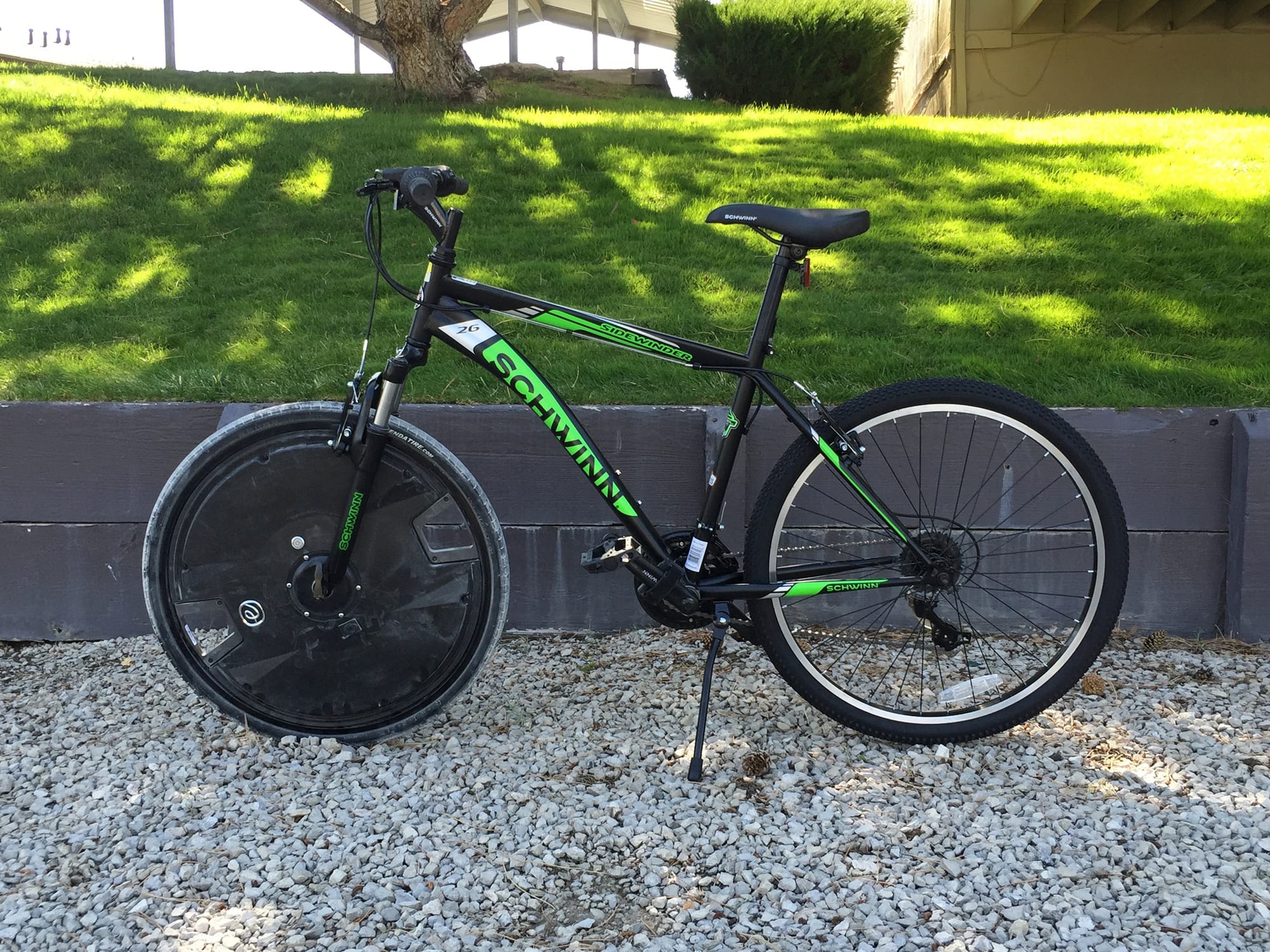
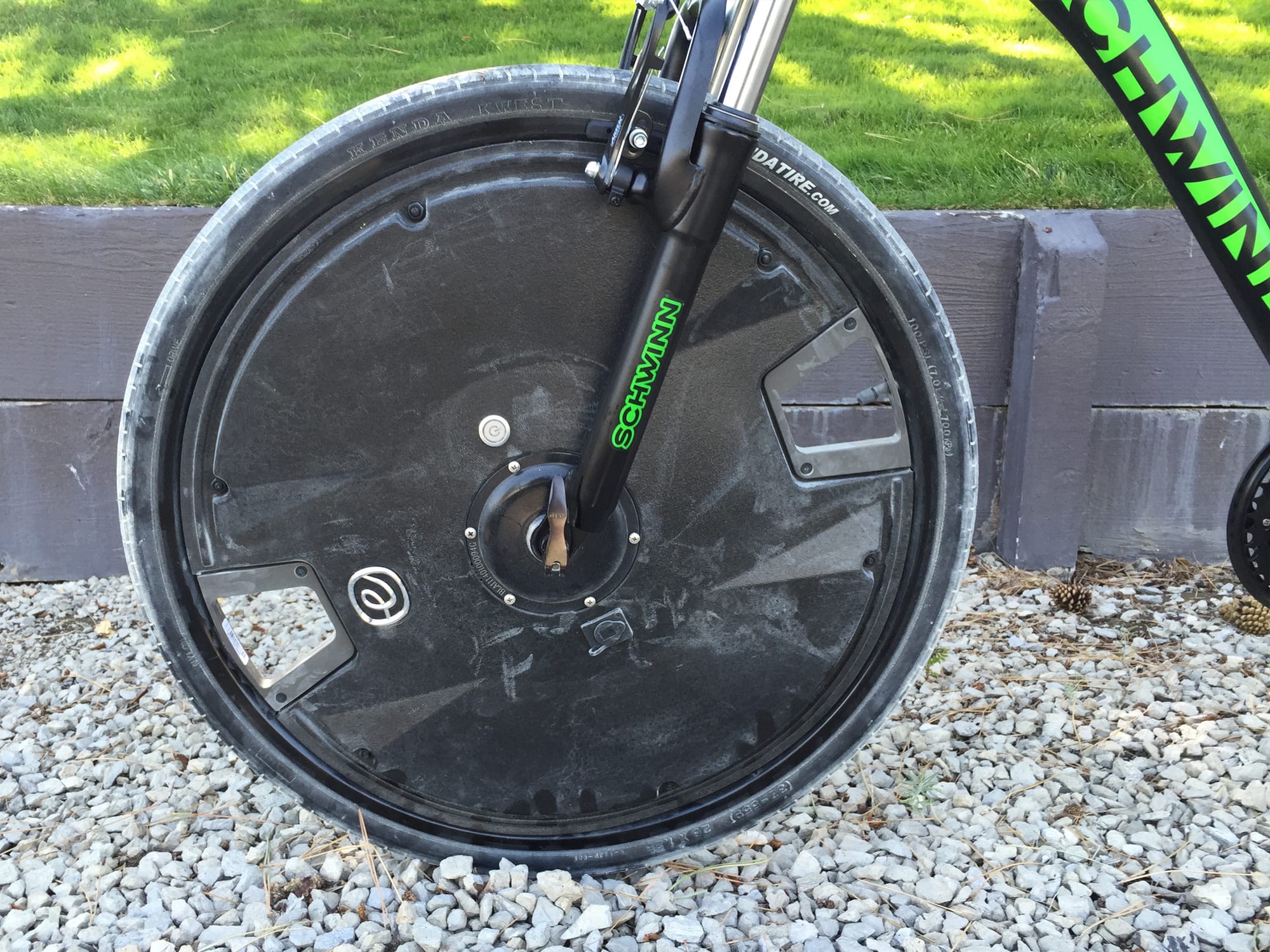
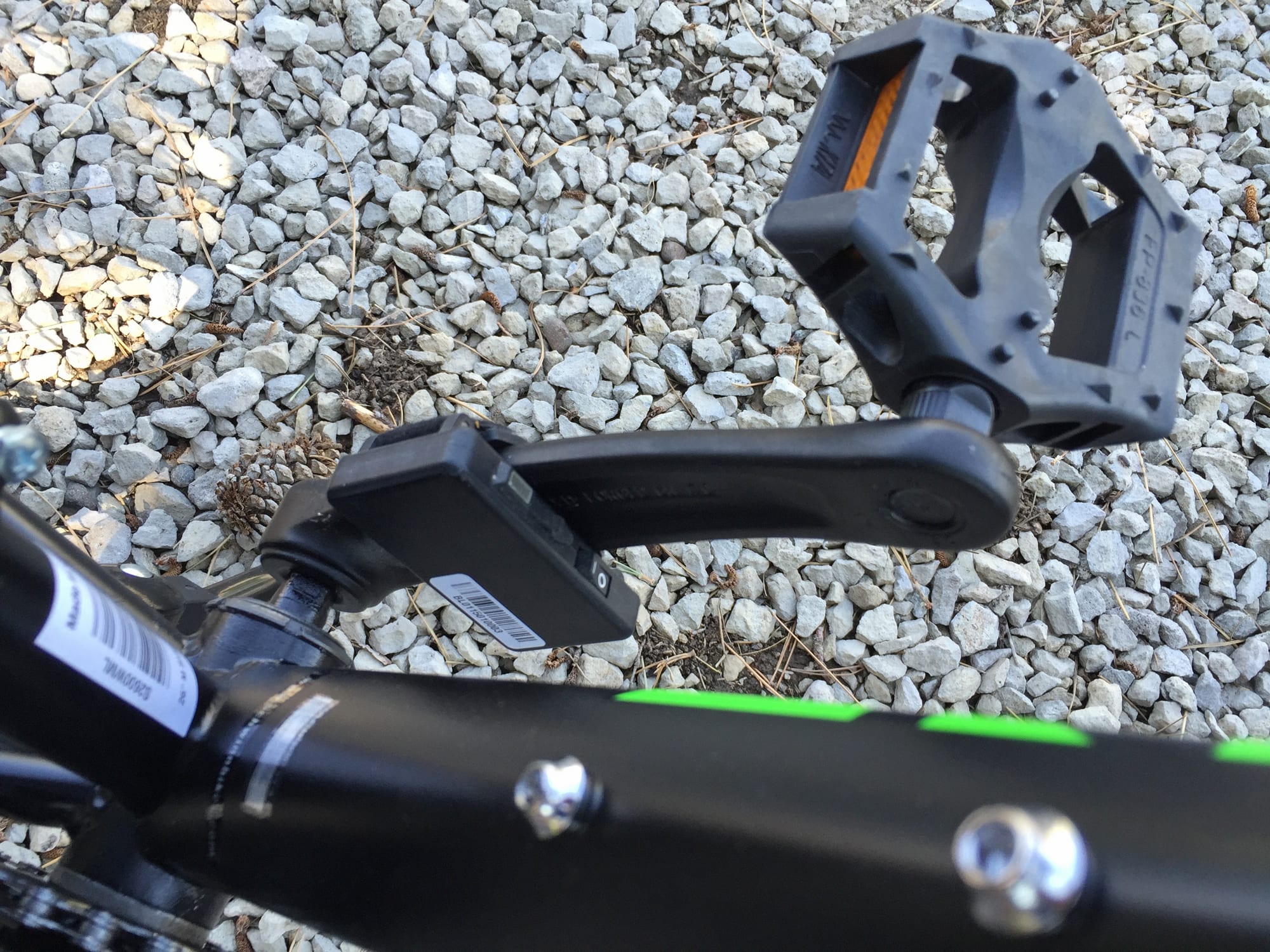
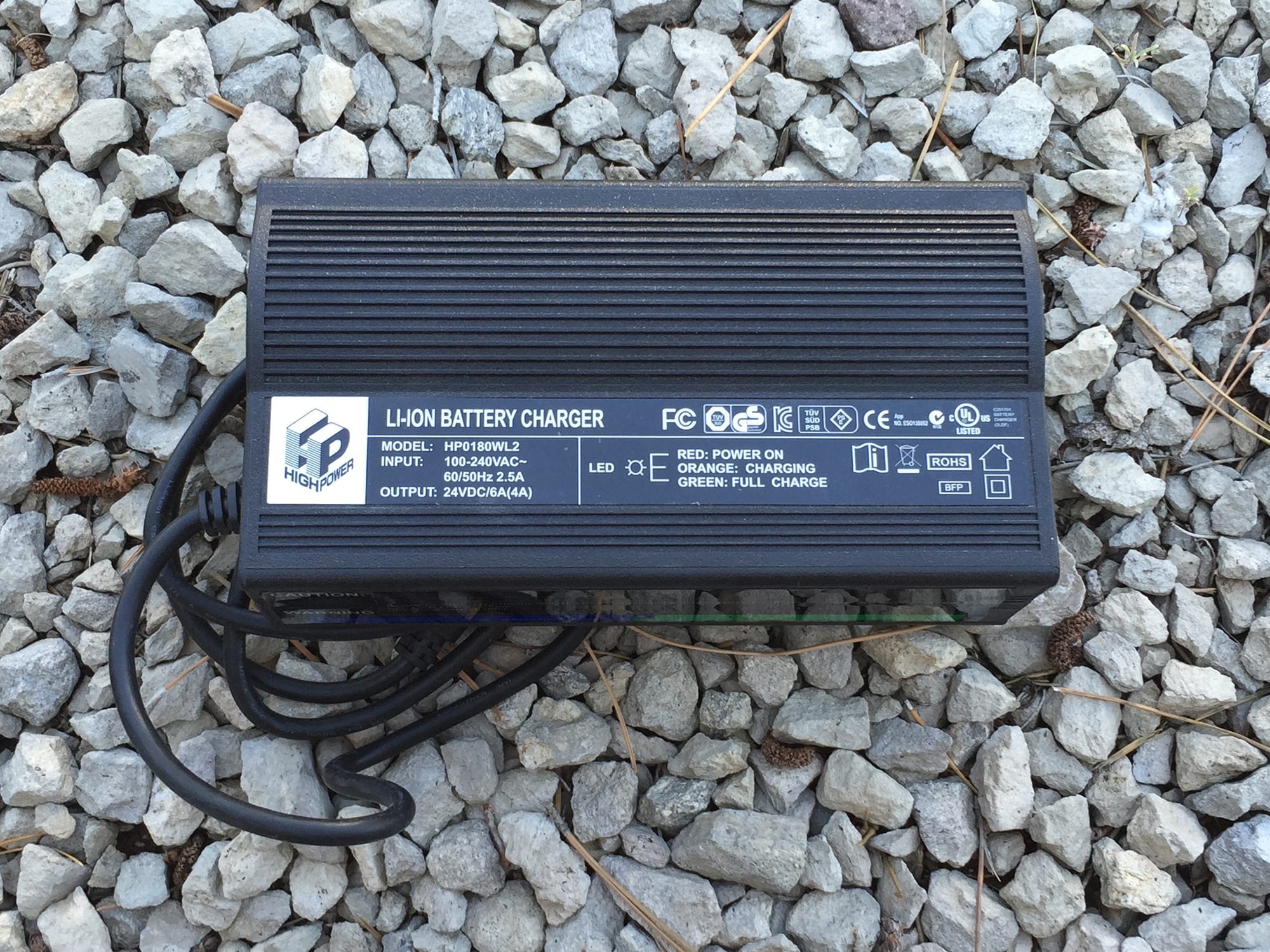
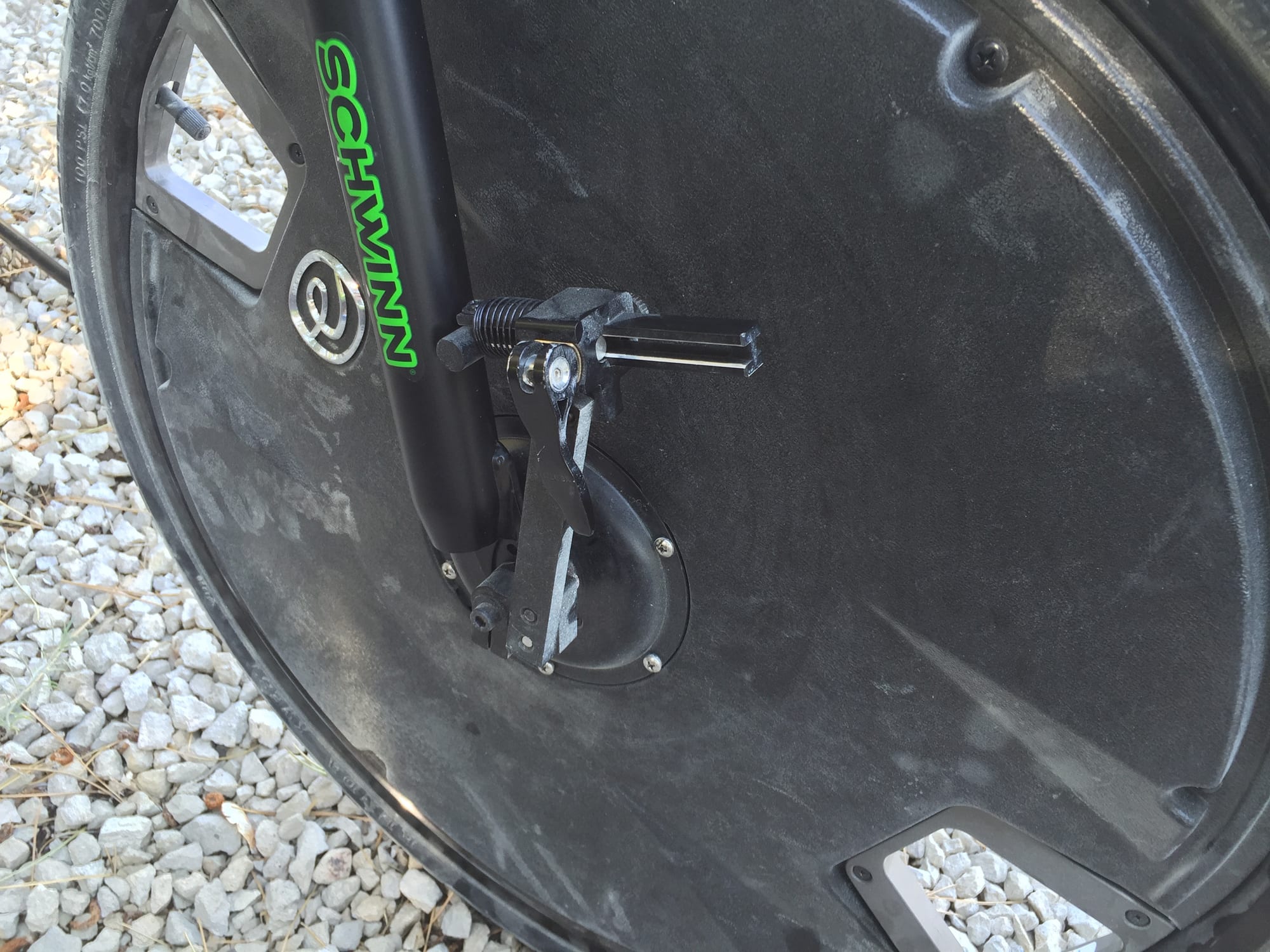
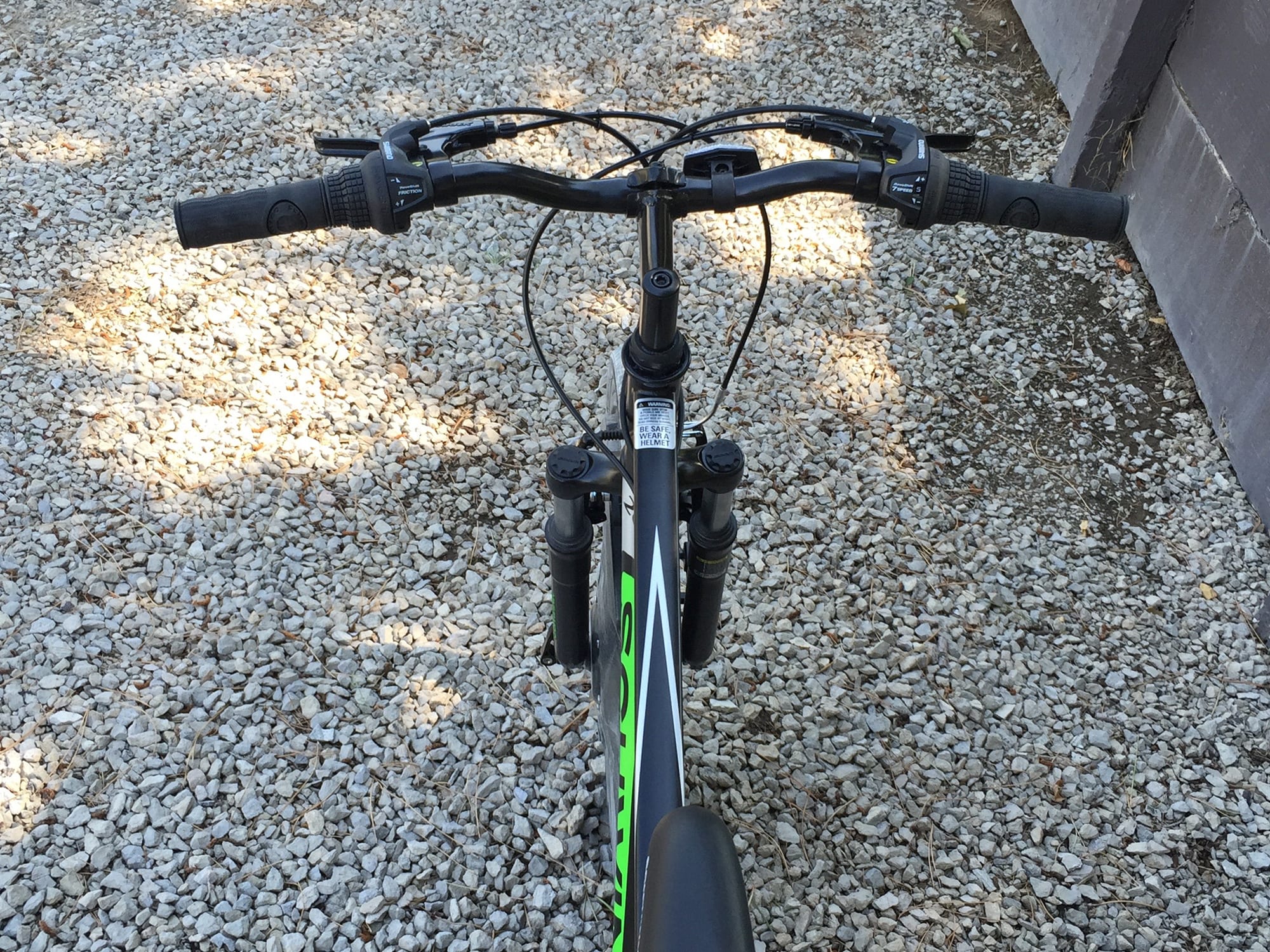
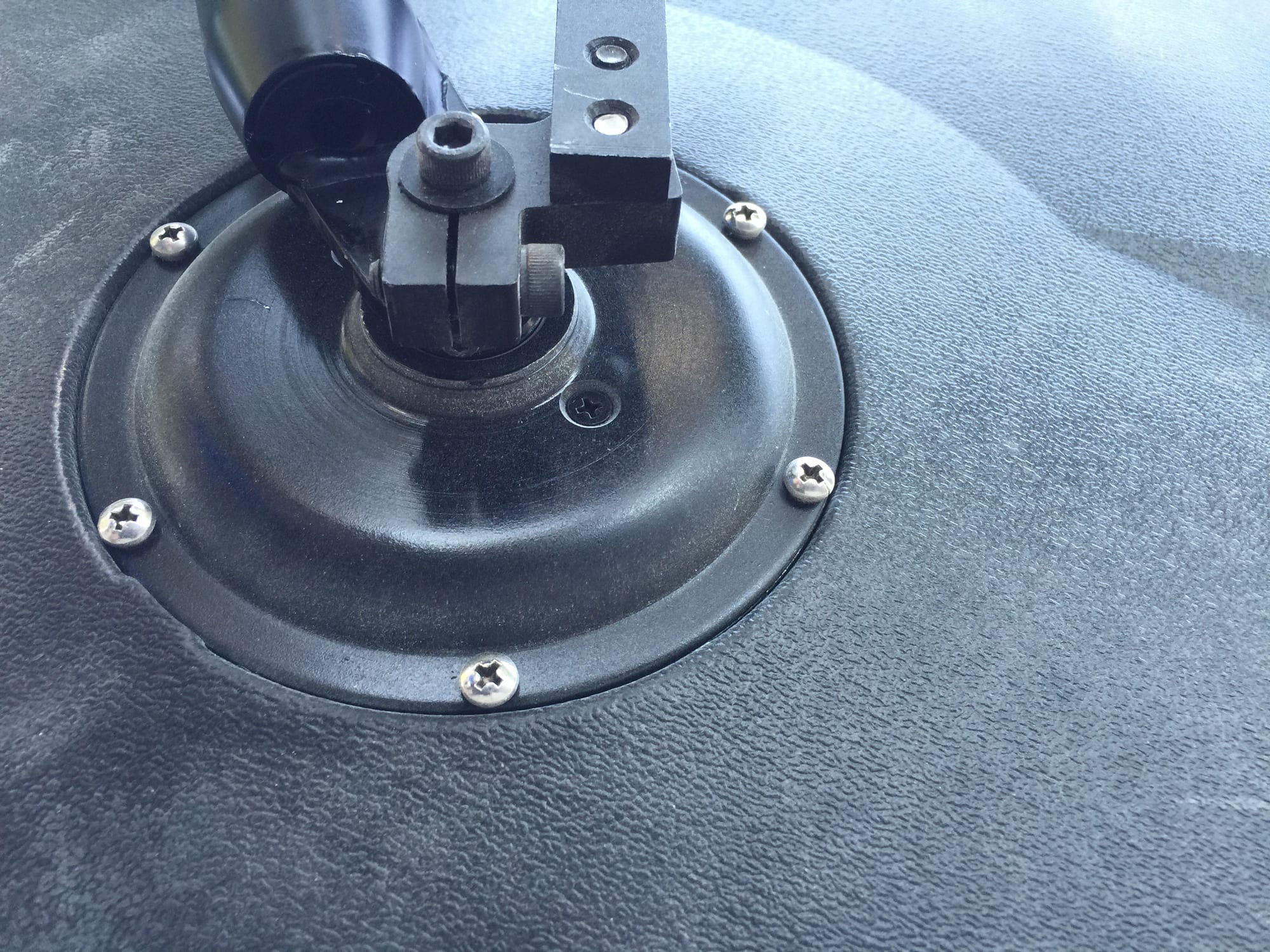
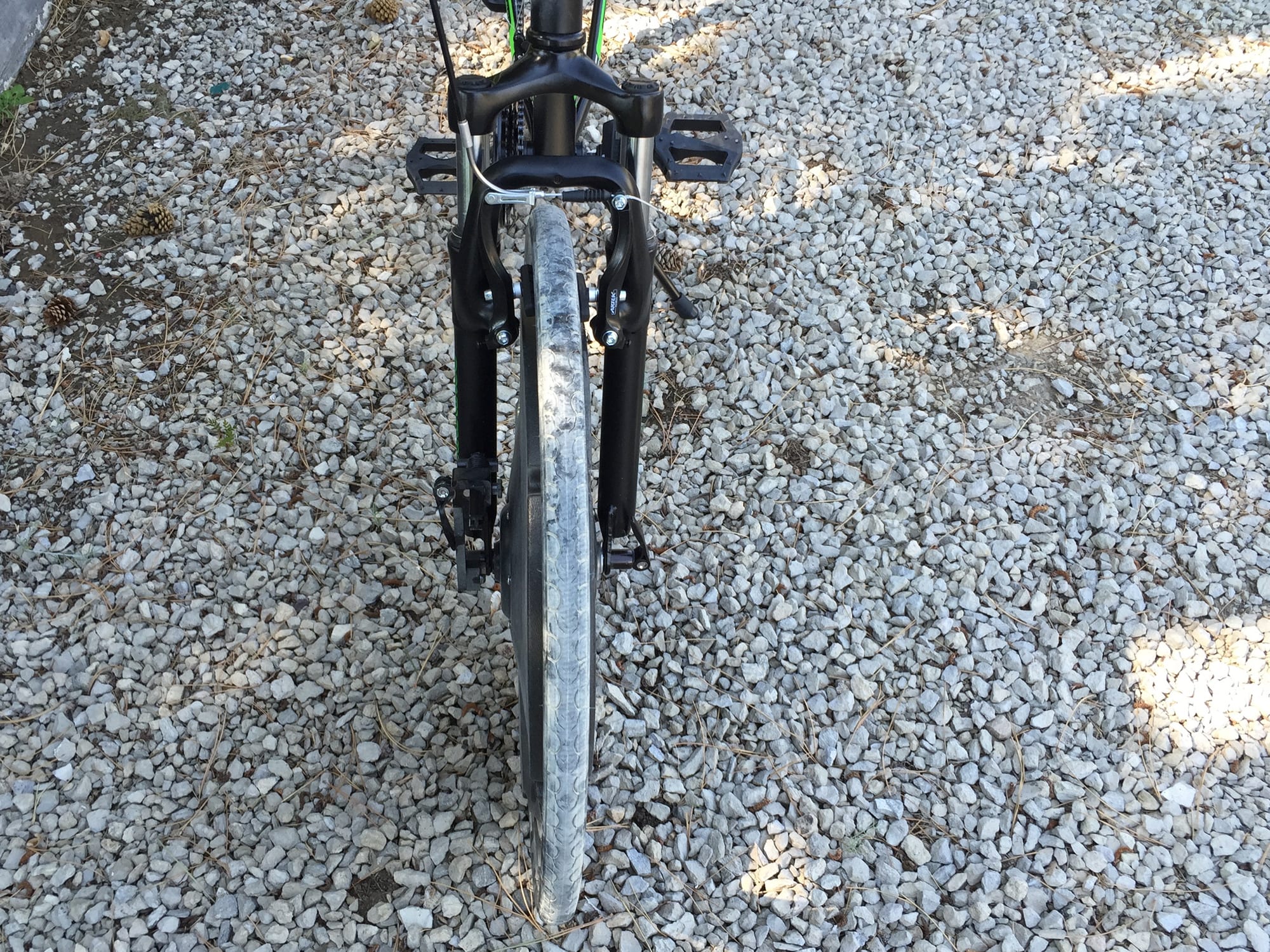
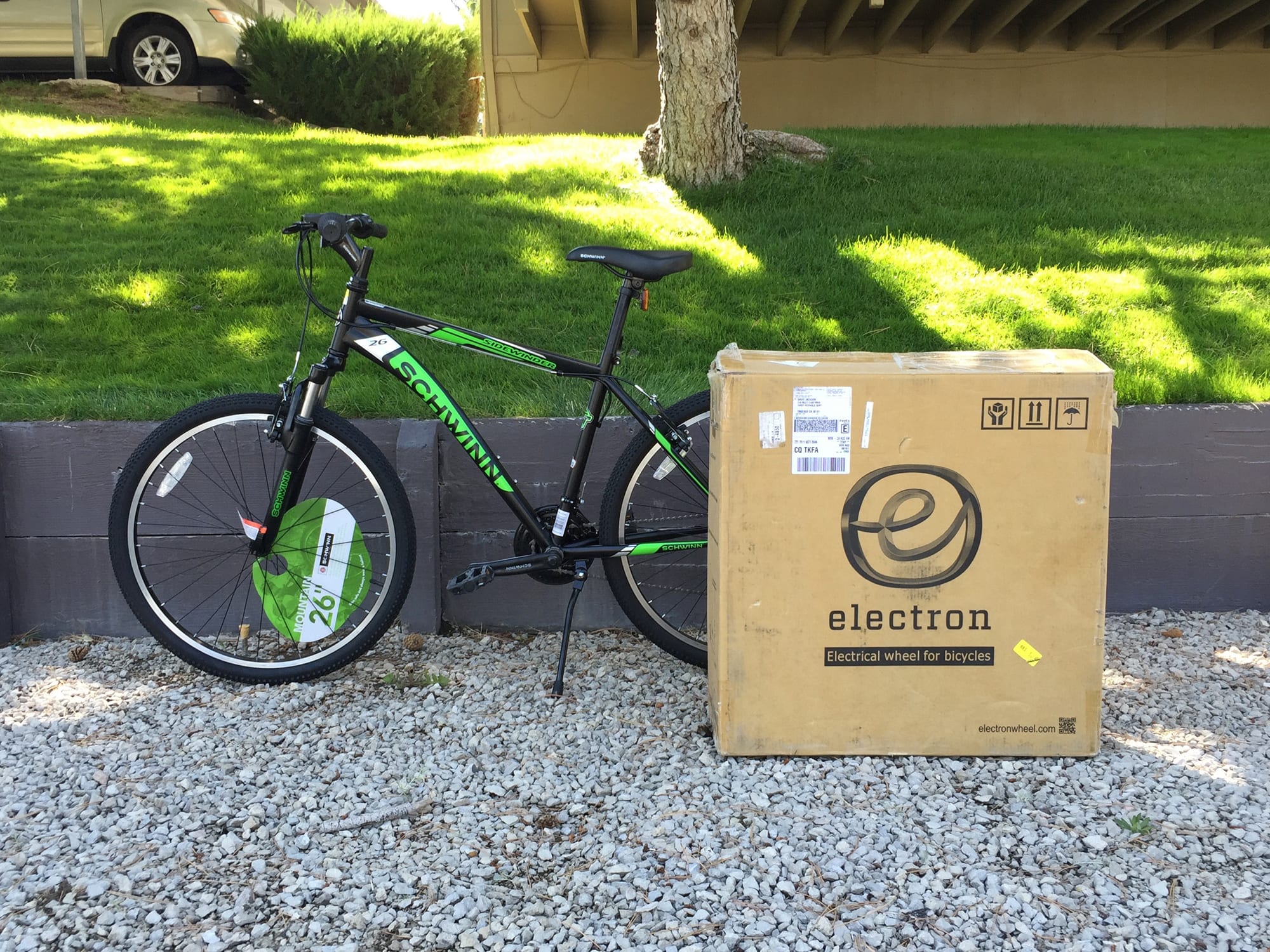
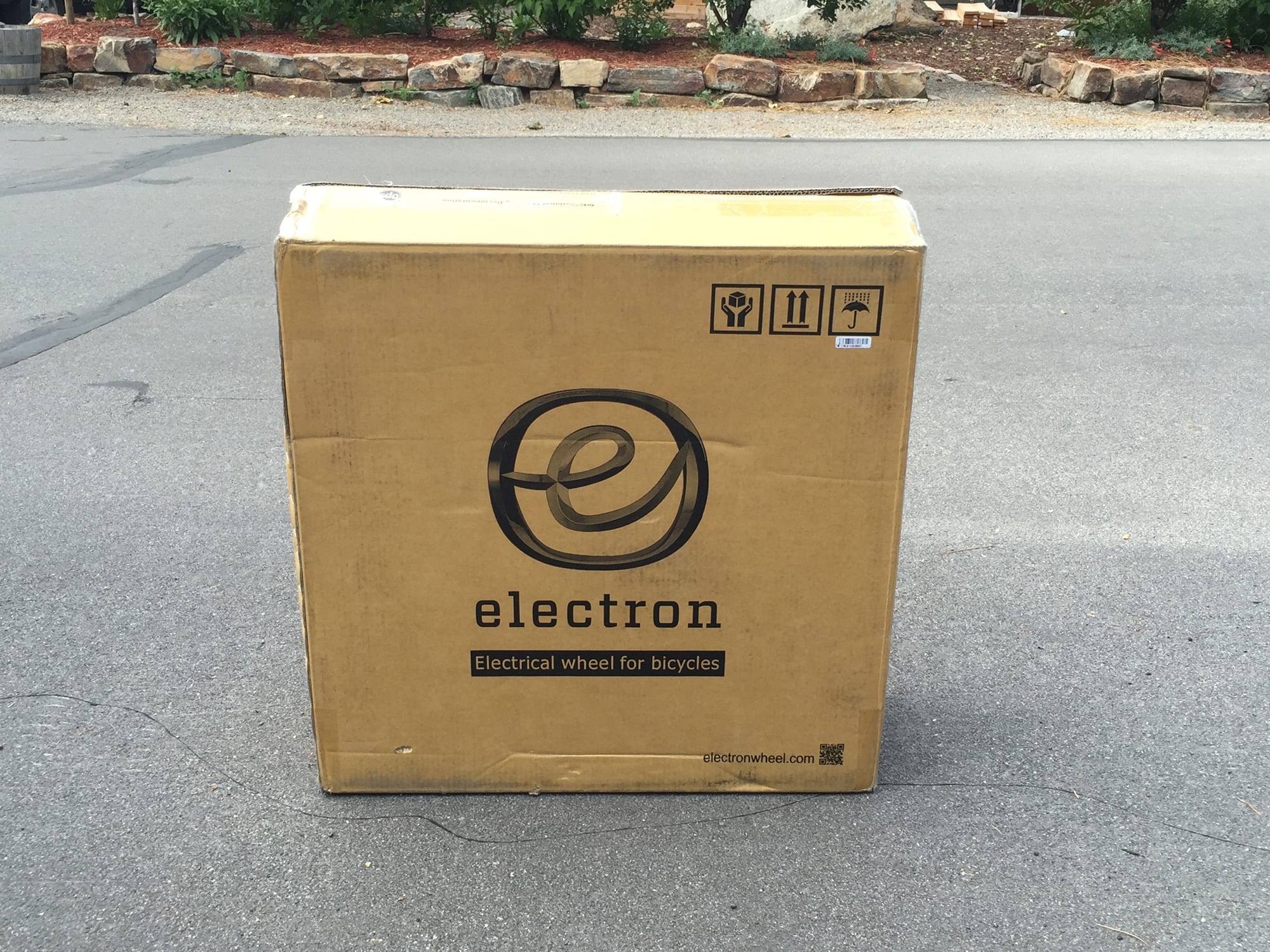

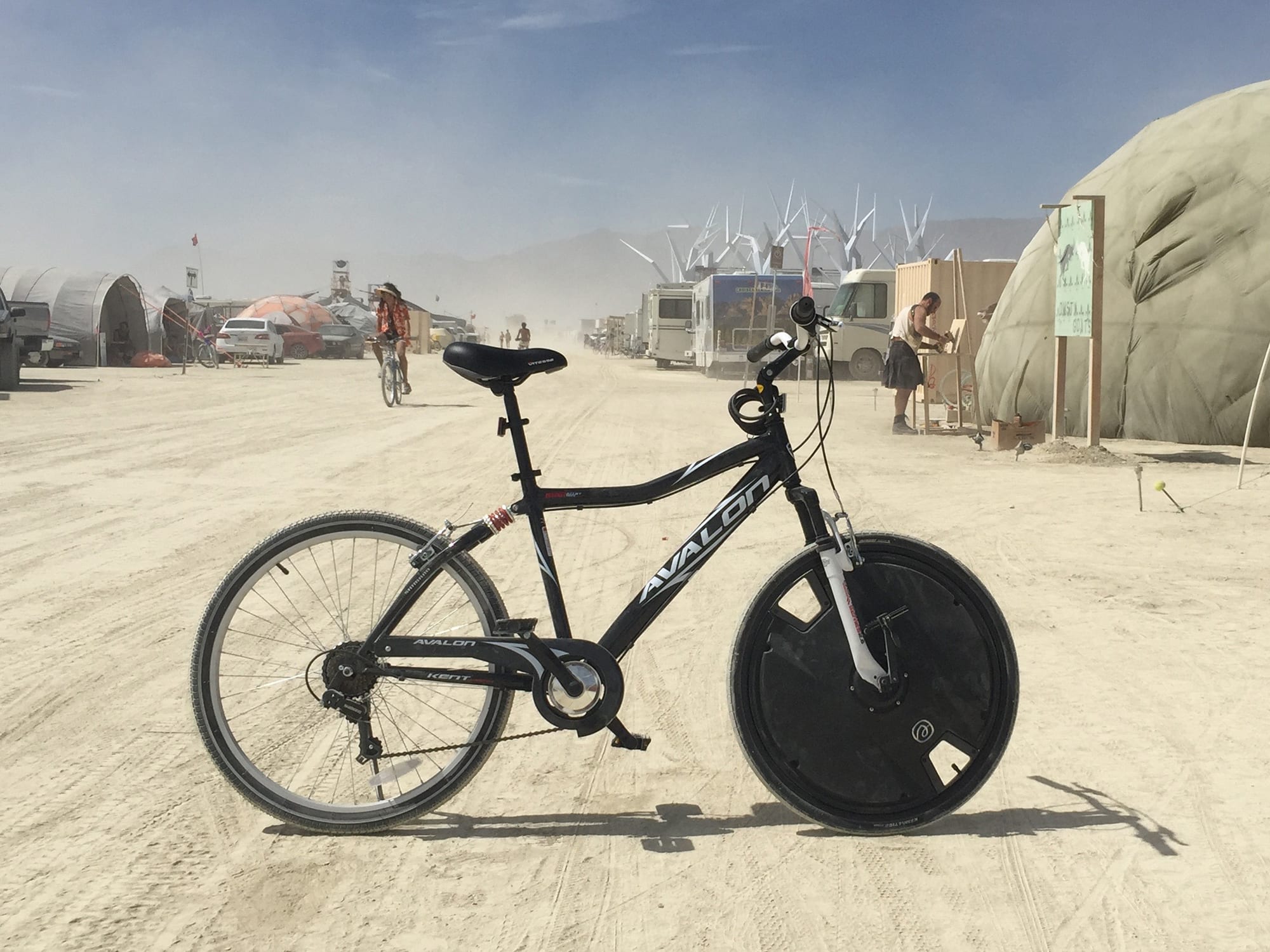
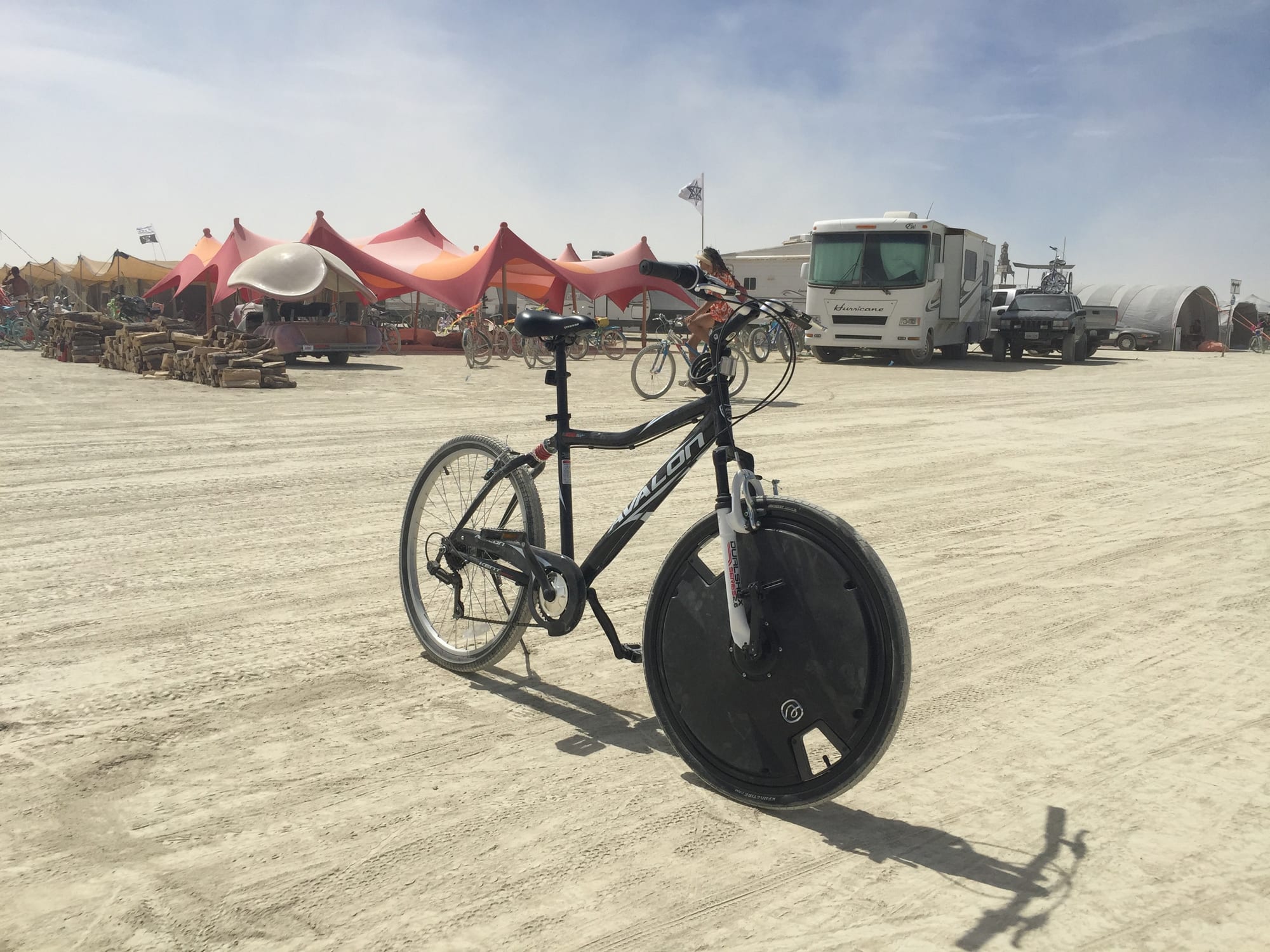



Jonathon says
$800 for a measly 250W motor and 24V battery. PASS.
Court Rye says
Well, there’s also a wireless cadence sensor, mobile app (for both iOS and Android) and the custom design of the wheel available in three sizes. Yes, this is one of the weaker kits but it’s also fairly light… They also made it $200 cheaper than the 2013 model. It’s not for everyone but I think they did a decent job and enjoyed riding with it :)
Wade says
This one is interesting to me. I’m simply looking for something that will make my 19 mile one way commute easy enough to do every day during good weather. I typically do this commute 3 days per week in summer, putting some serious miles on. On my own power, I usually average around 17.5 MPH. I could put this wheel on my single speed Trek Earl, and combined with the right cog/chainring and my two speed kickback hub this wheel might do the trick, if I also use clip-on aero bars to reduce drag, in normal mode. You didn’t by any chance measure the distance it took to fully deplete the battery did you? I have 4 bikes already, I don’t really want to buy another one if I can easily convert the one I have, and then covert it back to do another ride I do with it called Cino Heroica in northwest Montana.
Court Rye says
Hi Wade! Unfortunately I was not able to test the bike to its full range (and there are so many variables that impact this… wind, terrain and rider weight). I estimated the range in the specs above based on battery capacity and my experience with other ebikes. If you are already completing the ride under human power then this will help you out and take the edge off… even low-power light weight kits like this one are a big help (almost like doubling human output) and you can really appreciate it if you’re a seasoned rider :)
CHRISTIAN HENSON says
I just want to put my opinions out there. I did try the electron wheel. I was very happy with the power!! I commuted to work and happily made it there without breaking a sweat. It was amazingly easily to install it on my bike. It was just as easy as changing a wheel. The wheel is very heavy, so expect that when flipping your bike over. I strongly disliked the cadence sensor. On my first ride it ripped off my pedal arm so I really hope this is something that will be fixed in the future. there are so many options for sensors, the one they went with feels cheap and that is probably my biggest gripe.
Court Rye says
Hi Christian! Your opinions are always welcome here, especially since you shared them so constructively… everyone has a different perspective and I love that you’re enjoying the wheel and that your feedback might even help the company improve the cadence sensor design :)
Kip Anderson says
I am not encouraged by the website of this company. Their website currently lists nothing in stock, including the newer Generation 2 wheel.
Naoki Ajikata says
I have one on my Elektra , but it seems they went bankrupt and shutdown ….
Court says
Hi Naoki! That’s too bad… I met these guys in Nevada and saw how excited they were about ebikes and this new wheel motor design. I guess there just wasn’t enough interest, given how niche it is. I hope you’ve enjoyed it and wish you luck finding another ebike or kit :D